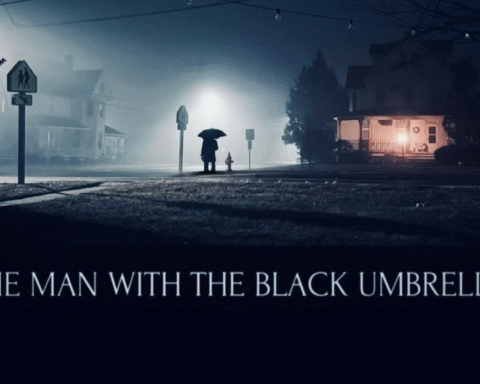Released in 2018, ‘The Favourite’ is a thought-provoking film directed by the acclaimed Yorgos Lanthimos. It stars Olivia Colman, Rachel Weisz, and Emma Stone, whose stellar performances have contributed significantly to the movie’s success. The film is set in the early 18th century during the reign of Queen Anne, portrayed by Olivia Colman. Rachel Weisz and Emma Stone play Sarah Churchill and Abigail Masham, respectively, who engage in a fierce rivalry to become the Queen’s favorite.
‘The Favourite’ has received both critical and commercial praise, becoming a significant milestone in contemporary cinema. The movie was lauded for its sharp, witty script, exceptional production design, and the powerful performances of its lead actresses. Olivia Colman’s portrayal of Queen Anne earned her an Academy Award for Best Actress, while the film also garnered multiple nominations and awards at various prestigious ceremonies, including the Golden Globes and BAFTAs.
This film stands out as a significant piece in modern cinema due to its explicit engagement with feminist themes and the female gaze. By centering on complex, multi-dimensional female characters who wield power and navigate their desires, ‘The Favourite’ challenges traditional narratives and invites viewers to reflect on gender roles and dynamics. As we delve deeper into the review, it becomes clear how ‘The Favourite’ uses its narrative and visual style to provide a provocative critique of historical and contemporary issues related to women, power, and desire.


Historical Context and Plot Overview
Set in the early 18th century, during the reign of Queen Anne, ‘The Favourite’ immerses viewers in a time of political turbulence and personal turmoil. Queen Anne, portrayed by Olivia Colman, is an ailing monarch whose fragile health and emotional instability have left her particularly vulnerable to the influences of those close to her. The film contrasts sharply with typical historical dramas by focusing not on grand political movements but on the intimate and often brutal power struggles within the royal court.
At the heart of the narrative is the intricate and volatile relationship between Queen Anne, her close confidante Sarah Churchill (Rachel Weisz), and the ambitious newcomer Abigail Hill (Emma Stone). Sarah, the Duchess of Marlborough, has long held sway over the queen’s decisions, wielding her position with a calculated blend of affection and authority. However, the arrival of Abigail, initially demeaned by her lowly position, sets off a fierce competition for the queen’s favor. Abigail’s resourcefulness and cunning quickly propel her up the ranks, challenging Sarah’s dominance and igniting a battle of wills.
As the plot unfolds, viewers are treated to a nuanced exploration of manipulation, ambition, and intimacy. Director Yorgos Lanthimos deliberately deviates from traditional historical storytelling by highlighting the personal desires and machinations of women, shown through a lens often referred to as the female gaze. The film’s feminist undertones are evident as it eschews the male-dominated narratives commonly seen in historical genres, instead presenting a microcosm where female power dynamics take center stage. This approach not only provides a refreshing perspective but also provokes thought about how ambition and desire manifest differently through the experiences of women.
In essence, ‘The Favourite’ is not just a portrayal of three women vying for power but a broader commentary on the complex interplay of relationships, the vulnerability of those in power, and the lengths to which individuals will go to achieve their desires. The film’s departure from conventional historical dramas to focus on the intricate dance of manipulation and intimacy offers a compelling and provocative look at feminism and the unique ways in which women navigate and wield influence.

Character Analysis: A Trio of Complex Women
‘The Favourite’ presents a compelling character study of three central figures: Queen Anne, Sarah Churchill, and Abigail Hill. Each of these women exhibits a rich tapestry of motivations, personalities, and intricate relationships that defy traditional female archetypes commonly depicted in period dramas.
Queen Anne, portrayed by Olivia Colman, is a character steeped in vulnerability and complexity. Despite her role as monarch, she is often presented as frail and emotionally burdened, suffering from several health issues and personal losses. Anne’s vulnerability is poignant but does not overshadow her moments of assertiveness and authority. Her relationship with Sarah and Abigail is key to understanding her multifaceted personality. She oscillates between affection and manipulation, revealing both her dependency and her desire for genuine connection and loyalty.
Rachel Weisz’s Sarah Churchill is an embodiment of strength and political acumen. As the Duchess of Marlborough, Sarah wields considerable influence over Queen Anne and the court. Her motivations are driven by a mix of genuine care for Anne and a strategic pursuit of power. Sarah’s character challenges traditional notions of female subservience; she is assertive, intelligent, and unyieldingly ambitious. Her complex relationship with Anne is marked by both tenderness and control, showcasing a dynamic interplay of power and emotion.
Abigail Hill, played by Emma Stone, emerges as the most complex of the trio. Initially appearing modest and subservient, Abigail is quickly revealed to be cunning and opportunistic. Her motivations are grounded in a survivalist instinct to reclaim her status and security. Abigail’s evolution from a fallen lady to a formidable court player is marked by deceit and manipulation, encapsulating the theme of power and its corrupting influence. Her interactions with both Anne and Sarah are a blend of charm and calculation, highlighting her adaptability and ruthlessness.
These three characters, in tandem, present a nuanced exploration of femininity, power, and desire. ‘The Favourite’ deviates from traditional period dramas by offering a feminist narrative that emphasizes the strengths and flaws of its female leads, presenting them as fully realized individuals with their own ambitions and vulnerabilities. Through these characters, the film interrogates the complexities of female relationships and the intricate dynamics of power and influence.

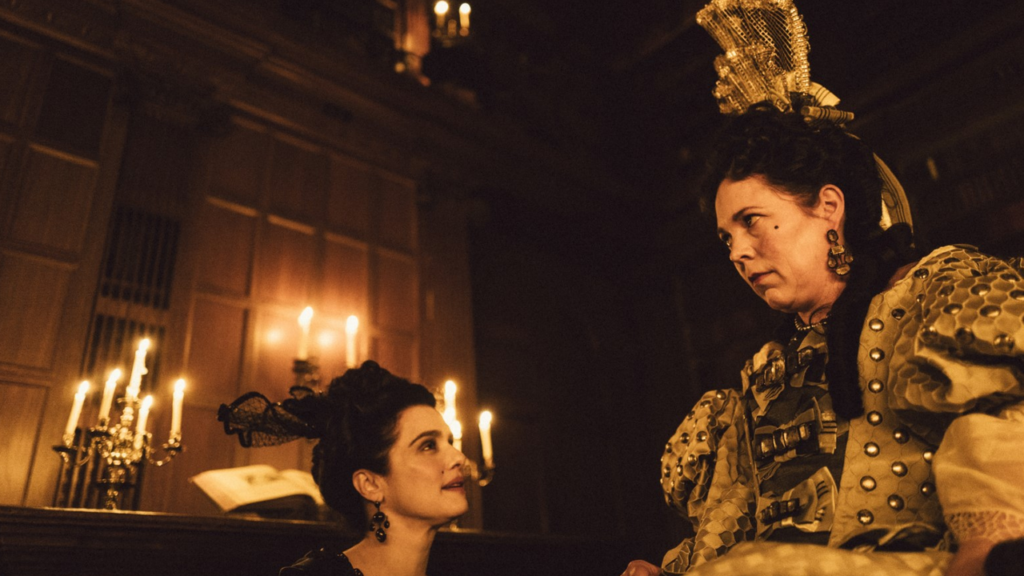
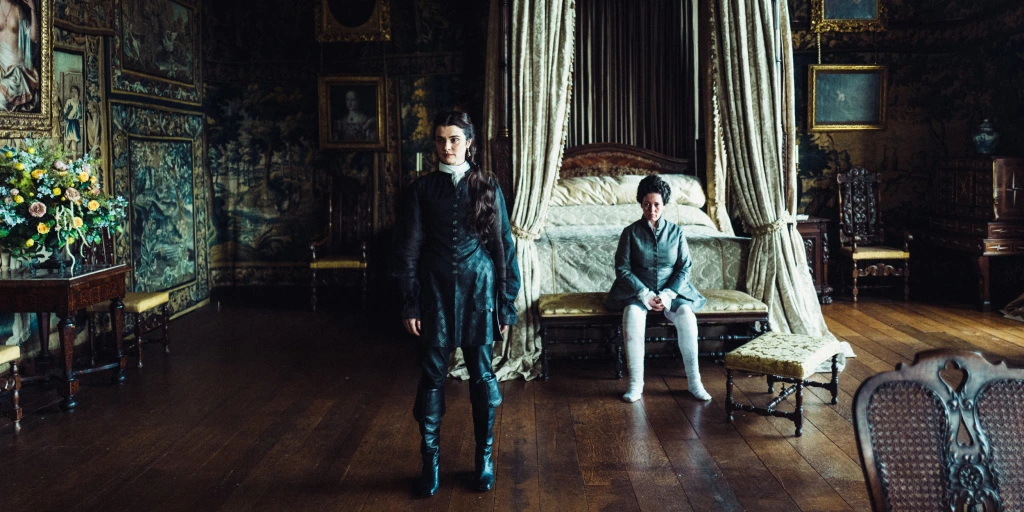

The Female Gaze: Visual and Narrative Techniques
Yorgos Lanthimos’s ‘The Favourite’ masterfully employs the concept of the female gaze, both in its cinematography and narrative structure. The film prioritizes the perspectives, emotions, and desires of its female characters, subverting traditional cinematic conventions rooted in the male gaze. Lanthimos achieves this through a combination of innovative camera techniques and carefully crafted narrative elements that focus on women’s experiences and power dynamics.
Central to Lanthimos’s approach is the use of close-up shots and subjective camera angles that immerse the audience in the intimate experiences of the female protagonists. For instance, scenes involving Queen Anne often employ tight framing and lingering shots that capture her vulnerability and complex emotional landscape. This focus on her internal states allows the viewer to empathize deeply with her character, thus emphasizing the female gaze.
Moreover, Lanthimos’s use of fisheye lenses and wide-angle shots serves to further distort the traditional perspective, presenting a world where female experiences take precedence. The decision to shoot certain scenes from low angles or with exaggerated perspectives disrupts conventional power dynamics, making the viewer acutely aware of the shifting control among the female characters. By using these techniques, the film not only highlights women’s experiences but also critiques and subverts the dominant male viewpoint.
The narrative structure of ‘The Favourite’ also reinforces its feminist themes. The plot revolves around the intricate relationships and power struggles between Queen Anne, Sarah Churchill, and Abigail Masham. Unlike many historical dramas that often place women in supporting roles, ‘The Favourite’ positions its female characters at the center of the story. Their desires, ambitions, and manipulations drive the narrative forward, ensuring that their perspectives are foregrounded. This approach effectively challenges the traditional male-centric storytelling and underscores the significance of the female gaze in the film.
By intertwining visual storytelling techniques with a female-centered narrative, ‘The Favourite’ offers a provocative exploration of women’s power and desires. Lanthimos’s deliberate subversion of the male gaze invites the audience to view the film through a lens that celebrates and prioritizes female experiences and perspectives.


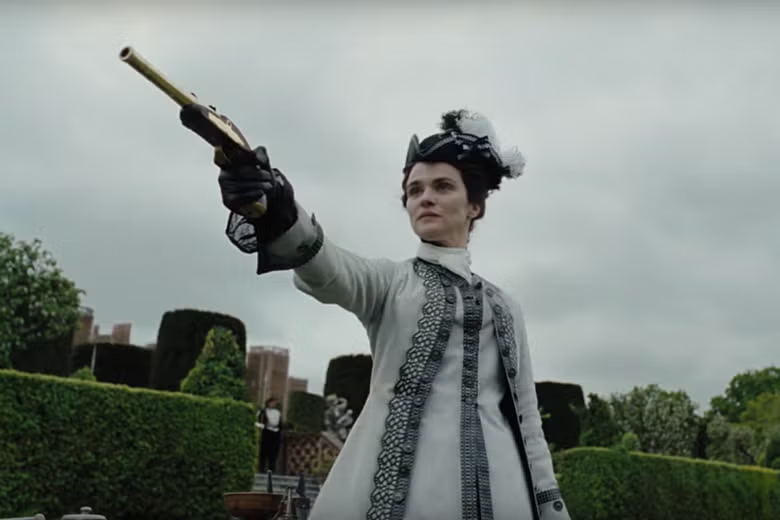
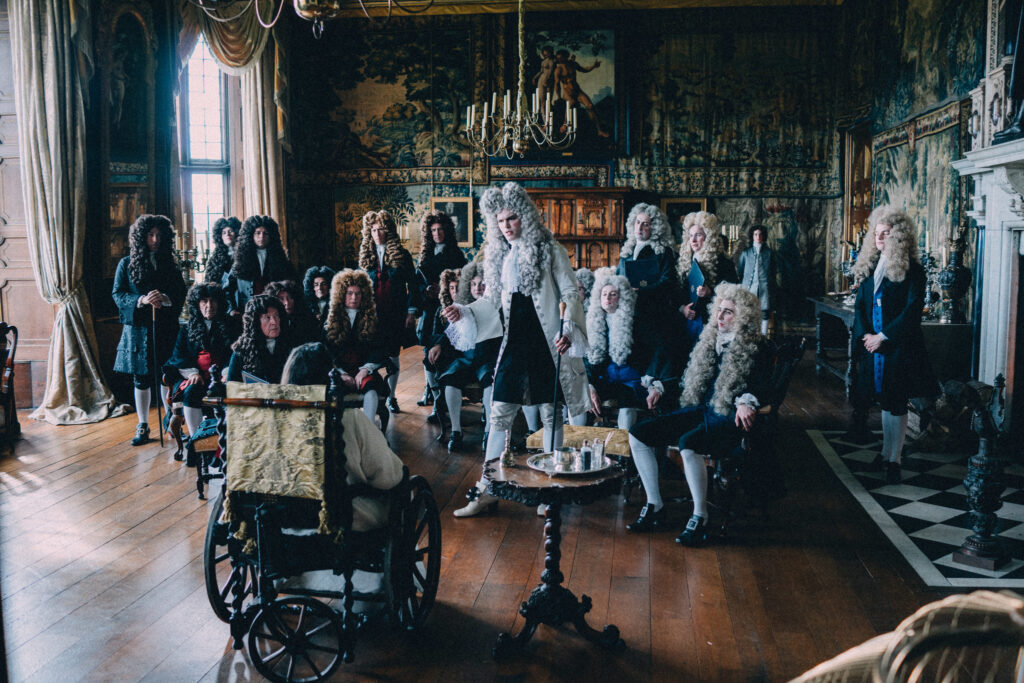
The film ‘The Favourite’ intricately weaves the themes of power, ambition, and desire through its narrative, showcasing the lengths to which the main characters go to achieve and maintain their positions. At the heart of the story is Queen Anne, whose vulnerabilities and insecurities are continuously exploited by those around her. The film’s portrayal of female ambition is both complex and compelling, challenging traditional stereotypes often associated with women in positions of power.
Lady Sarah, the Queen’s close confidante, exemplifies the extreme measures that one might take to secure a political stronghold. Her calculated maneuvers and sharp intellect highlight the ruthless nature of political ambition, devoid of gender biases. Through Lady Sarah’s character, the film underscores that the pursuit of power is intrinsically tied to relentless ambition and a willingness to compromise personal integrity.
In contrast, Abigail’s character arc presents a different perspective on ambition. Her initial innocence and subsequent transformation depict a raw and survivalist approach to ascension. Driven by a desire to escape her past and secure a future of comfort, Abigail’s journey is marked by manipulation and strategic alliances. Her rise to prominence is not merely a tale of ambition but also a testament to her adaptability and cunning within the patriarchal confines she navigates.
The intimate, often sensual dynamics between the characters provide a rich exploration of how personal desires intertwine with their political maneuvers. These relationships are both a source of empowerment and a means of control. The female gaze in ‘The Favourite’ allows the audience to witness these intricate layers of desire and ambition, free from the conventional male perspective that often dominates historical narratives.
Ultimately, the film’s exploration of power dynamics, through the lens of female ambition and desire, offers a nuanced and profound commentary on the intersections of personal and political domains. By placing women at the forefront, ‘The Favourite’ not only challenges historical perceptions but also elevates the discourse on feminism and the complexity of human motivations.
The film ‘The Favourite’ takes a bold and nuanced approach to feminist storytelling, challenging traditional gender roles and defying conventional cinematic narratives. At its core, the movie subverts the stereotypical portrayal of women in the historical drama genre. Rather than depicting female characters as peripheral or subservient to male protagonists, ‘The Favourite’ places women at the center of the political and emotional arena.
One of the most striking progressive elements of the film is its potent exploration of women’s agency and sexual autonomy. The leading characters—Queen Anne, Sarah Churchill, and Abigail Hill—are portrayed with a depth and complexity that highlight their individual desires, ambitions, and struggles for control. This depiction is notable for its departure from patriarchal cinema, wherein women often exist only to support male characters or serve as mere romantic interests. In ‘The Favourite,’ women are not only the focal point but are also depicted as fully autonomous beings, orchestrating their fates despite the oppressive structures surrounding them.
The film’s critique of patriarchal structures is evident in its nuanced depiction of the dynamics of power and control. By showcasing the intricate manipulations and maneuverings of its female protagonists, ‘The Favourite’ underscores the limited yet profound ways in which women have historically navigated and undermined patriarchal systems. The characters’ relentless pursuit of power—whether for survival, affection, or revenge—reflects a feminist narrative that critiques the marginalization of women and highlights their resilience and resourcefulness.
Furthermore, ‘The Favourite’ effectively employs the female gaze, a concept that challenges the male-dominated perspective often pervasive in cinema. By centering the narrative on women’s experiences and perspectives, the film offers a refreshing and critical look at the complexities of gender relations and power structures. This perspective not only enriches the storyline but also aligns with contemporary feminist discourse on representation and equality. The combination of these progressive elements not only enhances the movie’s feminist interpretation but also elevates it as a provocative commentary on women’s roles in history and society.

Critical Reception and Cultural Impact
Upon its release, ‘The Favourite’ garnered widespread acclaim from both critics and audiences alike. Notably, the film’s feminist themes and portrayal of complex female characters were lauded as groundbreaking. Major critics highlighted the movie’s successful blend of historical drama with contemporary sensibilities, making it a poignant exploration of women’s power and desire through the lens of the female gaze.
The performances of the leading actresses, Olivia Colman, Emma Stone, and Rachel Weisz, were universally praised. Olivia Colman’s portrayal of Queen Anne stood out, earning her numerous accolades, including the Academy Award for Best Actress. Critics emphasized how Colman’s performance challenged traditional notions of femininity and power, embodying the movie’s feminist underpinnings effectively.
Emma Stone and Rachel Weisz also garnered significant attention for their roles, with critics noting their dynamic and often antagonistic relationship as a captivating study of ambition and manipulation. The direction by Yorgos Lanthimos was hailed for its distinctive style and ability to emphasize the intricacies of female relationships and power struggles. His unique vision supported the feminist narrative, offering a fresh and critical perspective on historical and social constructs.
The cultural impact of ‘The Favourite’ is noteworthy. It sparked conversations about the representation of women in cinema, particularly in the context of historical narratives often dominated by male-centric perspectives. By focusing on female ambition and desire, the film contributed to the broader discourse on feminism and progressive storytelling within the film industry.
Significantly, ‘The Favourite’ has been recognized as a notable work in the realm of feminist and progressive cinema, influencing subsequent filmmakers to explore similar themes with a nuanced understanding of the female gaze. Its critical success and cultural resonance underscore its enduring relevance and importance in challenging cinematic norms and pushing the boundaries of traditional storytelling.
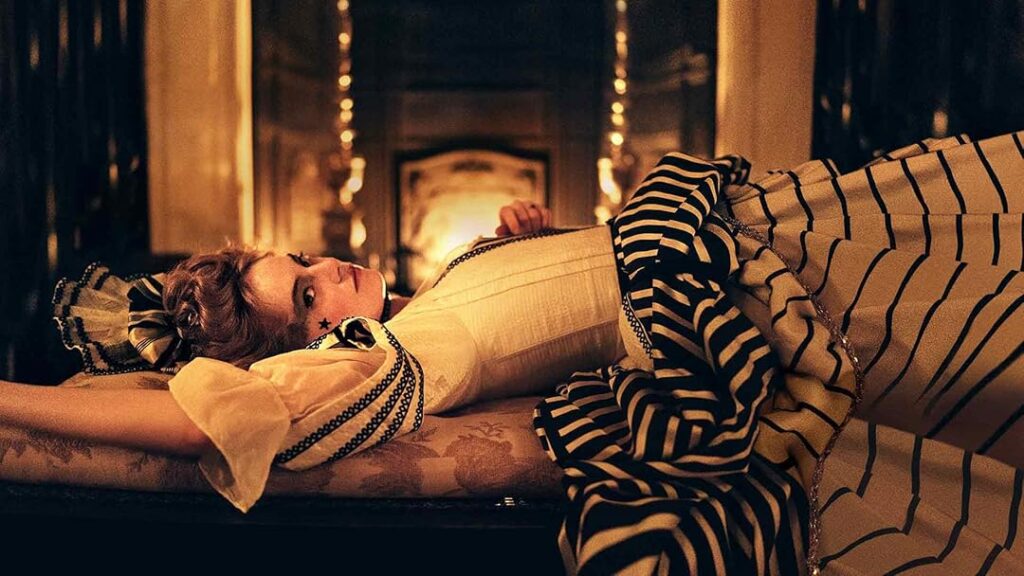
Conclusion: The Lasting Legacy of ‘The Favourite’
‘The Favourite’ remains an influential film, not merely for its craftsmanship but for its profound portrayal of women and power. The movie challenges traditional narratives and subverts expectations, presenting a trio of complex female protagonists who navigate ambition, love, and rivalry. This intricate depiction underscores the importance of the female gaze in cinema, emphasizing perspectives often underrepresented.
The film’s bold exploration of desire and political maneuvering demonstrates how nuanced and layered female characters can be. Rather than residing in the shadows of male-centric plots, these women are the focal point, with their stories intertwined in a dance of manipulation and vulnerability. This depiction is a stark departure from conventional portrayals, prompting audiences to reflect on societal norms regarding gender roles.
By daring to intertwine the personal with the political, ‘The Favourite’ offers a rich narrative that resonates on multiple levels. It brings to light the subtleties of power dynamics, revealing how personal affections are often entangled with political ambition. Such a portrayal ensures the film’s continued relevance, as it provokes discussion and re-evaluation of historical and contemporary gender politics.
Moreover, ‘The Favourite’ stands as a testament to the power of feminist filmmaking. Its progressive storytelling is not just an artistic achievement but a call to action for more representative narratives in the industry. The film’s success in challenging and engaging audiences ensures its legacy, making it a landmark in the ongoing journey towards gender equality in cinema and beyond.

